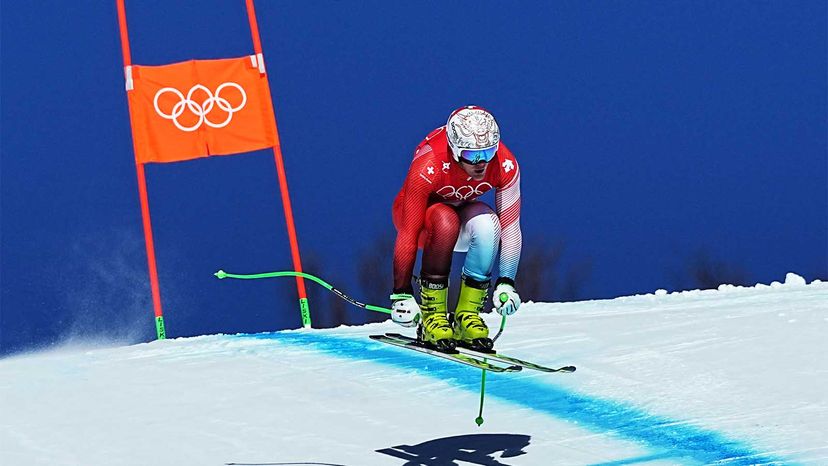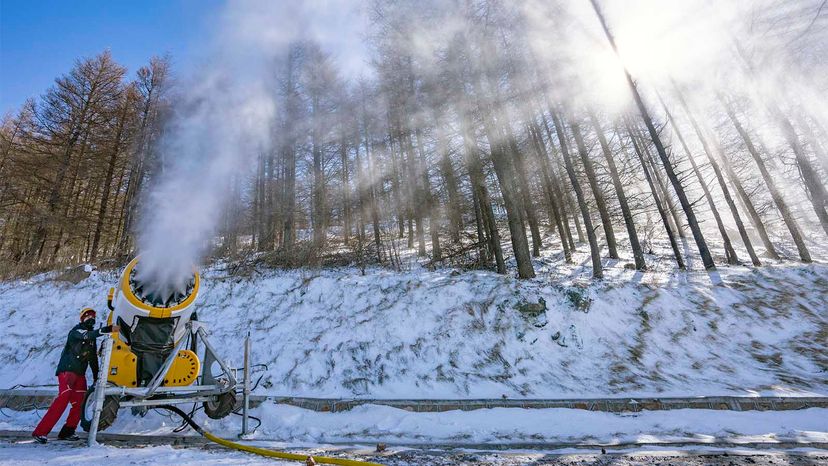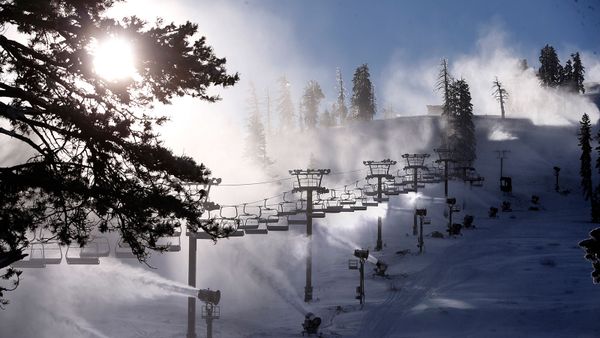
The snow.
That means a lot of fake, or man-made, snow is going to be shooting out of snow cannons onto the mountainsides to make enough snow for skiers and snowboarders to compete. In fact, 2022 will be the first Winter Olympics to rely almost entirely on fake snow, according to a report from Loughborough University in London. That's not as terrible as it might sound, since Olympic-level athletes are used to gliding across fake snow. Many ski resorts use fake snow to open the slopes early and extend the seasons well into spring.
Advertisement
Since they have so much experience with different kinds of snow, these athletes can definitely tell the difference between man-made snow and the real deal. Fake snow can feel stickier than real snow, so athletes use a harder wax on their skis and snowboards to help them glide across the surface. The fake snow is also firmer and harder packed. Natural snow, on the other hand, feels smooth as skiers speed down the slopes and snowboarders drop into the halfpipes.

The difference in the feeling comes down to how the snow is made and how it reaches the slopes. Natural snow is 10 percent ice mixed with 90 percent air, while man-made snow is 30 percent ice and 70 percent air, fluffy snowflakes on the way down, with lots of air in each flake.
Man-made snow has round crystals because of the velocity of being shot out of a snow gun. That shape means the flakes are denser, with less air between the crystals. Man-made snow also only falls several feet before it hits the ground rather than hundreds or thousands of feet, so the crystals don't have time to form fluffy flakes, even if they could.
The nature of natural snow means that it melts faster, while man-made snow holds up better if it rains. But fake snow does get icier faster, which can be particularly tricky when you're racing for the gold medal. That's another reason athletes train on as many kinds of snow as possible.
No matter what kind of snow is on the mountain, it's going to be groomed by machine, especially before a major competition. Often a base of denser man-made snow will be laid down before any natural snow falls, but it's not a perfect process. The two kinds of snow are usually mixed, so athletes need to be ready with their training and their wax for any kind of conditions.
Advertisement
